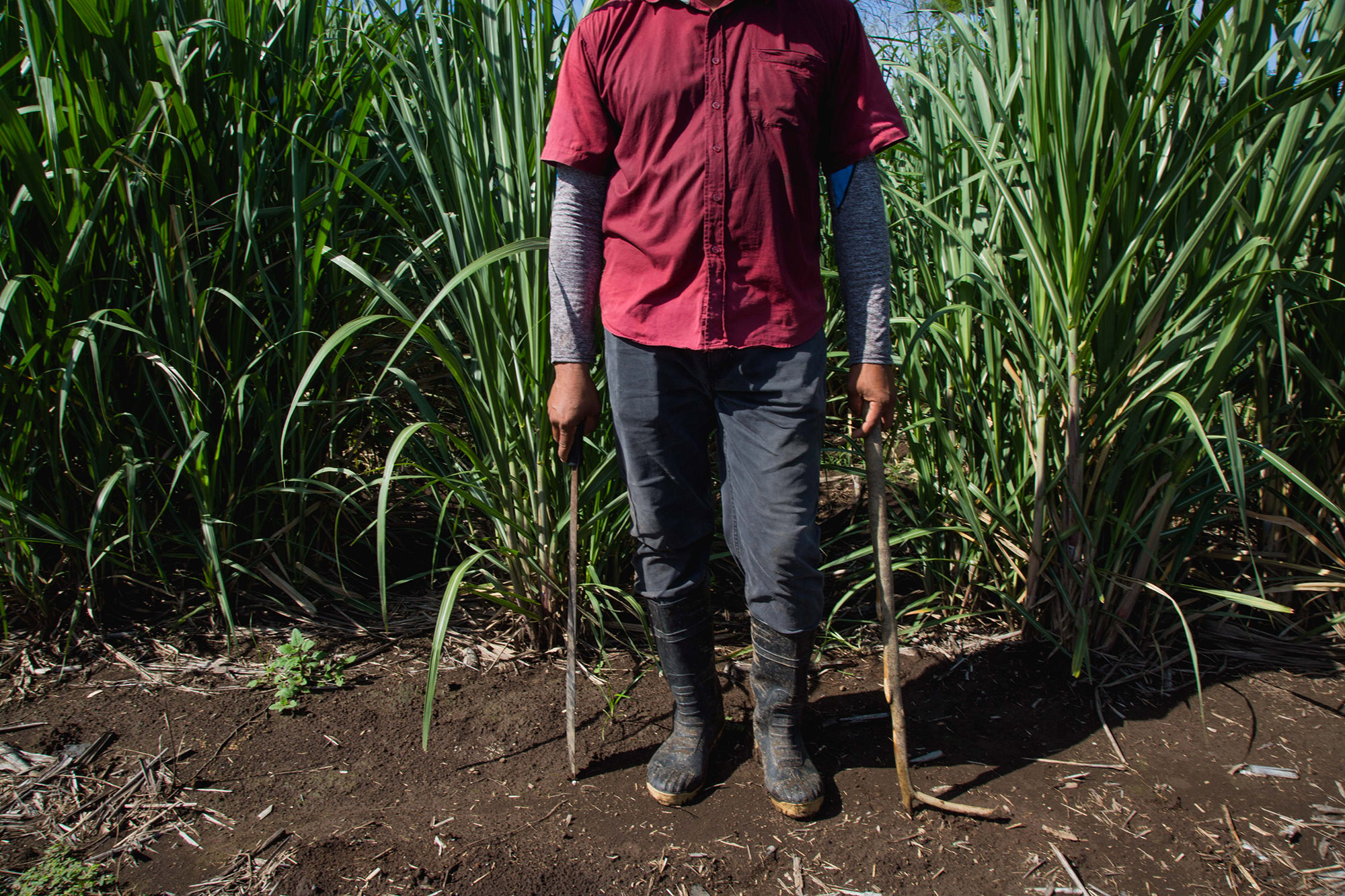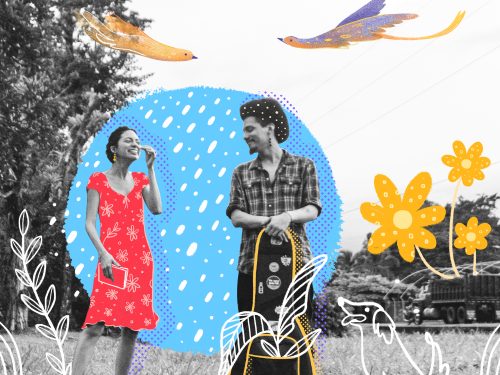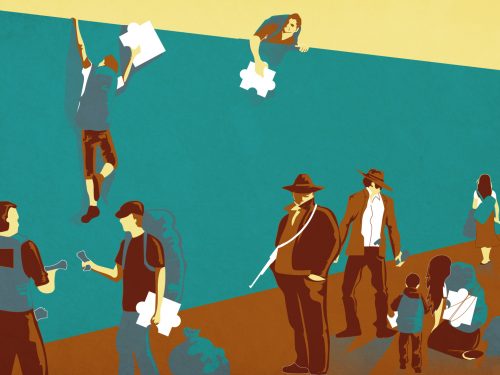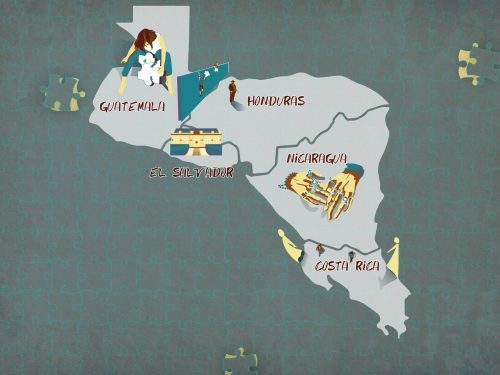
“They don’t let me out. They say that I can bring them the virus because I live in San José. I left at noon on Saturdays and came back on Sunday, because I sleep at work. I feel stressed, she just tells me that I can only go for a walk near the house on my day off.”
Pilar* wrote the text above on social media on July 30, when an organization warned about labor exploitation against domestic workers in commemoration of the World Day Against Trafficking in Persons. She wasn’t the only one asking questions and giving her testimony around the post.
“I have a friend who has been locked up for four months and they won’t let her out because they say that if she goes out, she can infect them,” wrote another woman.
Pilar is Nicaraguan and has lived in Costa Rica for nine years. She came here looking for a job and currently earns a living cleaning, cooking and doing housework for a family in Escazú.
Amid the pandemic, her bosses have limited her days off and the places she can go after hours. They don’t let her visit her husband in San José or run errands outside of Santa Ana, because “she can bring the virus.”
She could be a victim of trafficking for the purposes of domestic servitude, that is, she is forced to do work by depriving her of her freedom, without paying her a fair salary or in inhumane and unworthy conditions.
Human trafficking occurs when someone captures or retains a person and exploits them for their benefit or that of someone else, deceiving them, lying to them or abusing their vulnerability. This is explained by the International Organization for Migration (IOM). Worldwide, the crime is known as modern slavery.
Migrants, especially those in an irregular condition, are the easy target of human trafficking because they have many vulnerabilities: they migrate driven by poverty or political persecution and, on the way or in places of destination, they find critical conditions to live and to work. The COVID-19 emergency has recently been added to that.
The Organization for the United Nations (UN) assures that the pandemic increases the risk that people are victims of trafficking because social inequalities are increasing, such as unemployment, the decrease in income, the need to eat, to send remittances to family members and have access to health. And those are some of the scenarios that networks and traffickers take advantage of to exploit victims, says a report from the Office on Drugs and Crime (UNODC).
“[If a person] was left without a job, they could be exposed to someone offering them very tempting or very positive job options and, in that context, end up in a situation of exploitation,” explained the prosecutor against trafficking in Costa Rica, Eugenia Salazar, in a radio program of the Public Ministry.
The director of the Jesuit Service for Migrants (SJM) in Costa Rica, Karina Fonseca, also believes that migrants who keep their jobs during the pandemic run the risk of being exploited or worsening their condition with the risk of contagion as an excuse.
The health emergency creates a justification for employers to restrict the freedom of domestic workers on their day off, because if they go out, they can expose themselves and the family to contagion,” she exemplifies.
Nicaraguan people in Costa Rica already tend to dedicate themselves to tasks that represent a high degree of informality: agriculture, construction, commerce and domestic work. “They have been in a situation of greater vulnerability at a social, economic and even political level,” explains Sandra Chaves, the manager of the National Trafficking and Smuggling Coalition (Conatt) of the General Directorate of Migration and Foreign Affairs.
“(That vulnerability) is the easiest prey for trafficking networks to obtain human beings to exploit,” she adds.
Chaves lists some of the types of trafficking: illegal extraction of organs, irregular adoption, sexual exploitation, labor exploitation, domestic servitude.
As of 2012, Costa Rica maintains a registry of trafficking victims, which includes both the people who are exploited and those who are dependent on those victims, usually their children. It is a task led by Conatt, in which 21 state institutions such as the National Institute of Women (Inamu), the National Children’s Trust (PANI) and the Costa Rican Social Security Fund (CCSS) participate.
Since then and until May 2020, they have counted a total of 250 victims of trafficking in Costa Rica. After the Costa Ricans (51.2%), the nationality with the most registrations is Nicaraguan (25.6%).
Pilar says that her boss threatens to fire her if she goes away from the house where she works on her days off. “If I tell her to let me go, she just tells me ‘if you leave, don’t come back here.’ I feel blackmailed because I start to think ‘I lose my job, where can I find another? I better stay’. Is that legal?” asks Pilar, confused but with a deep fear of being out of work and without income.
In classrooms, hospitals and orchards, there are Nicaraguans fighting alongside us to get out of the crisis caused by the coronavirus. We tell you the story of two of them.
***
“When this started, I was doing a job but sometimes I say that they take advantage of the fact that one is Nicaraguan. I came in at 6:00 a. m. and they took me out sometimes at 10:00 p.m. She spent all day on her feet washing dishes, making juices, waiting tables. I didn’t sit down and they didn’t give me time to eat.”
Carmen* came to Costa Rica in the midst of the 2018 socio-political crisis in Nicaragua. She arrived with her two children and her husband, they requested refuge and they were given it. However, she feels that it has been impossible to get a job.
At the beginning of the pandemic, she was hired at a restaurant in La Cruz de Guanacaste, but little by little she became aware of the mistreatment: she was not given time to eat or to sit down, and she worked days of up to 16 hours.
She decided to resign, although sometimes she feels enormous pressure because neither she nor her husband have a job.
Right now, with this, everything is harder, because there are times when my children tell me ‘I want food or I want ice cream or I want something’; you try to find where you can get and maybe the little you get is enough to eat,” she says outside her little wooden hut near the Peñas Blancas border.
Chaves, from Conatt, puts herself in the shoes of people with extreme need and affirms that it is regrettable, but understandable, that they end up in situations of exploitation in the midst of crisis contexts. “If I am a single mother (…) and I don’t have what [to support the children] with, I will accept any job,” she says.
She also adds that “the greater the number of migrants in Costa Rica and those in extreme poverty or need, we will possibly see an increase in trafficking situations.”
In 2019, a year after the socio-political crisis in Nicaragua, Conatt recorded a doubling in the number of Nicaraguan victims compared to the previous year. However, it is not enough to affirm that the Nicaraguan crisis led to the increase in registration.
First, because, according to Chaves, in some cases the identification of victims is not immediate, that is, the event or situation of trafficking can be identified until a long time later, or even never be identified. Second, because the registry of victims is not a close reflection of reality, neither in the context of the crisis nor in a normal or everyday situation. There is an underreporting of people who are being exploited.
She calls that underreporting “the black figure.” Some agencies claim that for every victim who is identified, there are five or 20 unidentified, she says. “So, I would not dare to say how many victims there are under-registration, but what I can guarantee you is that what we have accredited [or registered] is the tip of the iceberg.”
***
“Potholes [bedrooms] of 3×3 meters were found where up to 9 workers lived and others of 6 × 6 where up to 25 people live, who slept in beds of form and mats on the floor, in addition to two bathrooms for 100 people, and long working hours”.
“They are told that they are going to earn 3,000 colones per bag of harvested oranges, and they also indicate that the work includes food, however when they are brought to the country these conditions change”.
This is how the then director of the DGME, Freddy Montero, described in 2013 a network that exploited Nicaraguans in Santa Cecilia de La Cruz, in Guanacaste.
The company dedicated to the harvest of oranges took advantage of the proximity to the border, the ease of crossing through blind spots and cheap labor. Montero commented that the migrants were hired by four companies that promised jobs at two radio stations in Nicaragua.
On another occasion, in 2017, the Migration Police dismantled a network that sexually exploited six Nicaraguan women in Upala, Alajuela province, which is also a border area with large lands dedicated to agriculture.
Offering food or lodging in exchange for work in hostels and hotels is illegal but very common on the coasts. Authorities have no idea how big the problem is. What consequences come with this type of employment during and after the pandemic? We looked for the answer together with the Punto y Aparte Journalism Association.
The researcher from the University of Costa Rica (UCR) specialized in migration issues, Carlos Sandoval, believes that police control at the borders creates a fertile scenario for the crime of human trafficking to increase, “especially considering that the Nicaraguan migrants maintain the urgency of coming to Costa Rica to work in the agricultural fields” and that, on the other hand, “the Costa Rican economy requires the Nicaraguan people.”
The migrant population in Costa Rica – mostly Nicaraguan – contributes 12% to the country’s Gross Domestic Product (GDP). However, for Sandoval and for Chaves, from Conatt, there is a problem in the business structure: “We continue to believe that at the agricultural, industrial, and construction levels, we are doing a favor to a migrant that we are going to hire without the rights minimum as a worker, ”says Chaves.
In fact, some of the “luxury destinations” for trafficking networks are those with large tracts of land dedicated to the agricultural sector. But others with considerable relevance are the border areas, the coastal areas and those that are touristically attractive. Guanacaste, precisely, has all these characteristics and that is why it is considered a fertile land for crime by institutions and organizations that work on migration and trafficking.
According to the Madrid-based Institute for Conflict Studies and Humanitarian Action, Costa Rica is the most famous country for sex tourism, especially with clients from North America.
Chaves agrees that, unfortunately, one of the hooks used by the networks is that the country is not only a natural paradise, but also an attraction for sex tourism and that, therefore, the coastal areas are also a focus of situations of exploitation for sexual purposes. “Areas like Jacó and Tamarindo”, she exemplifies.
Data from Costa Rica and the world show that women are the main victims of the crime of trafficking, especially for the purposes of sexual exploitation. Of the 64 Nicaraguan trafficking victims registered in the country, at least 44 were victims of exploitation in sexual situations.
According to the prosecutor against trafficking and smuggling, Eugenia Salazar, the networks and traffickers for sexual purposes are adapting to the new pandemic normality.
Before, in some way, there were more visible aspects: in a bar, in a massage room, which put its screen that it was a bar and what worked was an exploitation center”, Salazar exemplifies and adds that by the current restrictions all those places are closed.
“So the way this crime is operating is more private and more clandestine than we had before. Most of this activity is taking place through social networks. For example, a girl who offers clients through a social network ”, she adds.
***
“She was brought from Nicaragua about nine years old. They abused her, exploited her sexually and at work. At this moment she hears, for example, a glass breaking and it gives her some terrible flashbacks because she relates it to a moment when she was being tortured. She was pulling her teeth from stress and lost her teeth. This person can be around 40 years old and does not know how to write or use an ATM.”
This is how the social worker, Marcela Barrantes, recalls one of the cases of trafficking for sexual exploitation that impacted her the most. Barrantes was an official of Rahab, a foundation that serves victims of abuse, exploitation and trafficking for sexual purposes and that carried out training and attended victims for more than a year in La Cruz de Guanacaste.
“The consequences that these types of situations leave are serious and are very difficult to overcome. Sometimes they are never overcome,” she says, adding to the list of wounds sexually transmitted diseases and even the detachment of internal organs.
For her and for the manager of Conatt, Sandra Chaves, it is essential that communities turn on all their alarms to see beyond “normalized” situations. For example, in La Cruz there are many cases of sexual abuse and improper relationships that are sometimes the prelude to exploitation and trafficking, says Barrantes.
Chaves also believes that it is necessary to “stop acting as if nothing was happening” and that the population should be responsible and dare to report any type of violence or inhuman situation. It adds that the complaint is confidential and that as citizens, we do not have to do a prior investigation to support or justify our complaint.
***
You can report trafficking situations in Costa Rica to the telephones 2290-2703 / 2290-2723 / 2290-2734 or to the email [email protected]
*Pilar and Carmen are fictitious names. We reserve their names for security reasons.
Journalist Maynor Salazar collaborated in the reporting of this publication.









Comments